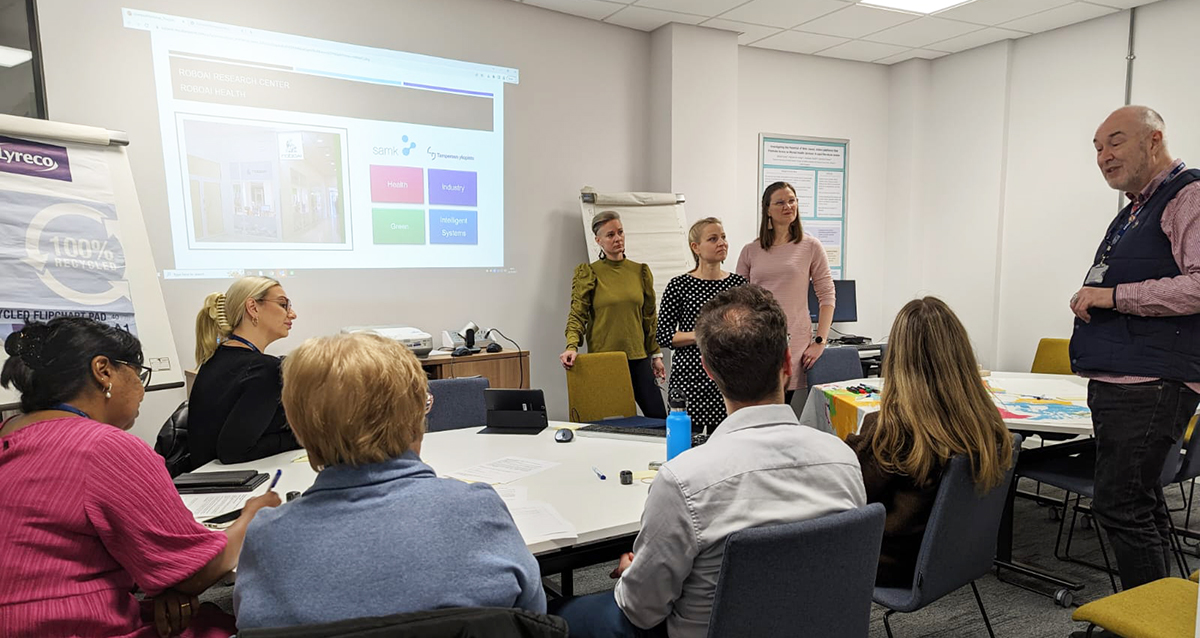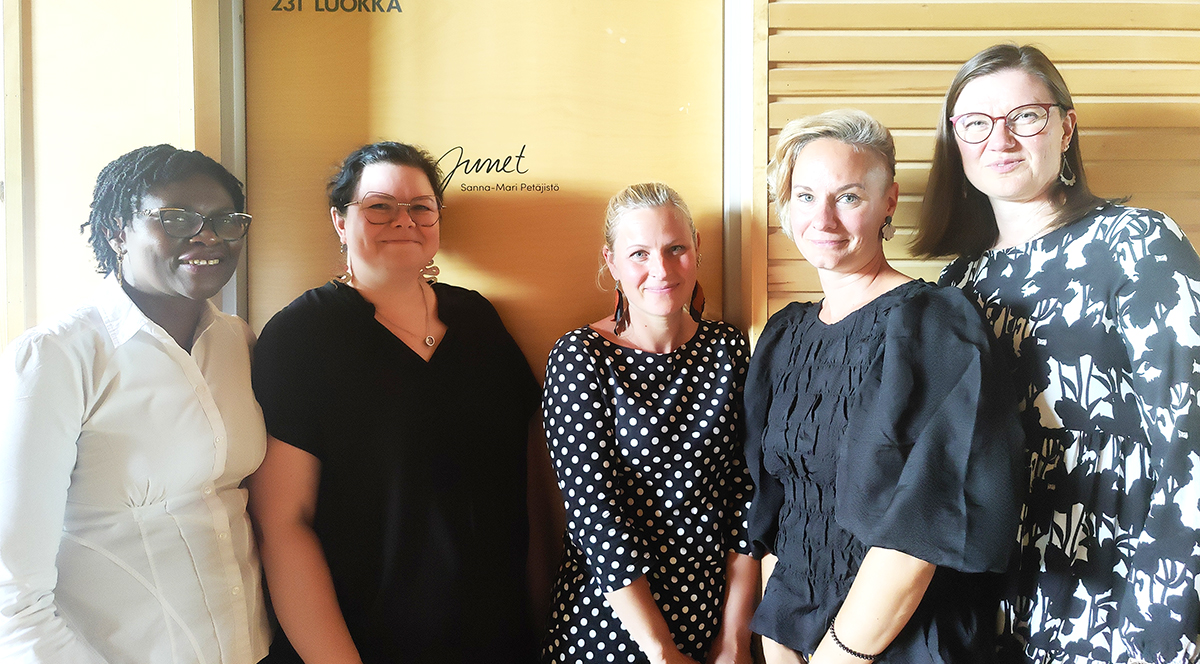
In the contemporary academic landscape, the facilitation of international research collaboration has become notably streamlined, especially in the wake of the COVID-19 pandemic. These ways of working have become more widespread due to the expansion of communication technologies and applications, the ease of remote meetings, cost-effectiveness and considerations for environmental sustainability. This trend has also improved possibilities for international collaboration.
Multidisciplinary international cooperation facilitates the exchange of academic ideas, increases the ability of researchers to examine, discuss and share experiences. The constructive questioning and critique of researchers’ own ideas and opinions within an international network of collaborators is crucial to the production of high-quality research outcomes. It also plays an essential role in the growth of the researcher as an expert, as well as in the development of new, open-minded innovations [1]. Particularly in an international collaborative network, not only between universities, but also the third sector and businesses, play an important role in the development of high-quality, impactful and relevant innovations. This article explores the development of smart clothing and smart furniture technologies as an example case, and describes the dimensions of international cooperation and the good practices and pitfalls learned from collaboration.
Real needs as the starting point of joint development and research
Many of today’s unresolved problems and challenges in social and health care are complex and global. Solving of the challenges requires international and cross-cultural expertise. At present, for example, the world population is ageing everywhere, which means an increase in the number of social and health care clients in societies [2]. Although ageing is a natural process, the associated decline in functional capacity, susceptibility to injury and various diseases pose a range of challenges for both older people themselves and societies [3,4]. This trend, combined with a global shortage of caregivers, has led many stakeholders to look for different strategies for accommodating to the increasing numbers of clients and for ensuring equitable access to essential services.
The trend is to support older people to live at home for longer and reduce the need for institutional care. In order to live safely at home for longer, new services, new ways of providing existing services as well as new methods and tools are needed.
In recent decades, there has been considerable and growing interest in the development of Active and Assisted Living (AAL) systems to support independent living [5]. The integration of new technologies can improve the quality of daily life, enable living at home and facilitate the use of many activities remotely. In developing technologies, particular attention must be paid to identifying needs and wishes from end-users. One potential solution is to ”embed” intelligence in existing products like furniture and clothing that are available to everyone. Although the potential of smart furniture and smart clothing is significant, they are not yet widely available on the market. One reason is that their development requires the pooling of expertise from many sectors and new models of cooperation. The market for smart furniture and clothing is international and collaboration is needed between different industries (technology, wellness, furniture/clothing manufacturing & design), as well as between researchers and companies.
Experiences and lessons learned about international, cross-sectoral collaboration
Multidisciplinary international cooperation doesn’t happen overnight. Establishing and, in particular, keeping it alive is hard work and requires a long-term effort that lasts for many years. Satakunta University of Applied Sciences and elderly people in Satakunta were first involved in the development of smart furniture in 2016 with eight other partner countries as part of the EU-funded BaltSe@nioR project, which developed and tested smart furniture in the home environment of elderly people.[6] The BaltSe@nioR 2.0 project then continued to improve the age-friendliness of public places. In 2020, a national TEKOS project coordinated by Satakunta University of Applied Sciences started to look for a smart clothing solution alongside smart furniture. Through the above-mentioned projects, first prototypes and permanent partnerships were built. These partnerships and development activities are currently being continued in the ReactiveToo researcher mobility project.
Already in the first cooperation projects, it was learned that cooperation across international borders and sectors requires long-term, dialogical and intensive dialogue. In addition, the involvement of the target group – the end-users of new innovations – has proved extremely valuable in matching product and user needs. Companies and research organisations each have their own interests, but also complementary interests, which need to be smoothly integrated into a partnership. Applied research helps to translate research results into innovation, thus creating a clear common goal for cooperation. A mutually agreed goal will help to find ways to navigate challenges that may arise from different cultures and practices. Insights from previous research and development activities should also be applied in order to avoid repeating past errors.
During the ReactiveToo project, international collaboration has involved SAMK researchers in the innovation of needs-based smart clothing and furniture to promote the inclusion and functional capacity of older people. In addition to crossing national and sectoral boundaries, collaboration has taken place between researchers from different backgrounds and at different levels. Experienced and early-stage researchers from different disciplines have been able to learn from each other’s approaches and increase their understanding of each other’s practices. For example, having a shared understanding of general research ethics may not be enough as practices, legislation and authorization processes differ between countries. Thus user-centered research and development requires patience and a considerate approach to mutual preparations and, above all, significant time investment.
The ReactiveToo project has, among other things, organised multidisciplinary and multicultural workshops. The first workshop (the photo above) was planned and implemented together with researchers from the Faculty of Health, LJMU, in the context of a researcher exchange. The planning of the workshop started remotely before the exchange, but the detailed preparations were only possible on-site during the actual exchange. The workshop was attended by a heterogeneous group of working partners and end-users.
The needs assessment survey for the ReactiveToo project was prepared and carried out with researchers from the University of Wolverhampton (School of Pharmacy and School of Engineering), mainly through remote meetings and on the basis of guidelines agreed during the researcher exchange. The face-to-face meetings (Figure 2) and initial discussions with the researchers facilitated the remote design work. The approach of involving potential end-users of the technology in the projects through questionnaires and workshops has generated a lot of discussion and brought out different perspectives. The discussions have proven productive, prompting researchers to critically evaluate their own ideas. By engaging in collaborative discussions and constructive questioning, researchers avoid getting stuck with their own assumptions and ways of thinking and acting.

In technology design, identifying the needs of end-users and taking into account cultural variations is crucial to obtain the most comprehensive and diverse outcomes. Surveys and workshops are proven to be good tools. Workshops typically create deeper insights where as surveys help in mapping the needs in wider and generic level. Although differences in cultures, policies and practices may have varied widely between countries, the basic needs of older people in managing their homes and the challenges of using technology were very similar. Concrete international cooperation helps to understand how research is conducted in another society and culture and to see the potential for implementing research findings in different countries. The internationalisation of researchers creates new research opportunities and increases cultural sensitivity. It also brings added value to education through international networks to advance teaching methodologies, curricula and degrees. For businesses, this creates entirely new opportunities for product development and exportation.
Next steps and conclusions
At Satakunta University of Applied Sciences the collaboration with a diverse international network of experts has facilitated the translation of cutting-edge research into practical innovations and products. This collaboration has led to the development of many prototypes including a talking desk, a cushion for assessing sitting, a smart mirror, and stress-measuring clothing. Achieving true collaboration at international level requires dialogue, time and an open mind to find our own ways of working together and to discover each other’s strengths and ways of working by getting to know each other. It is not easy to maintain productive cooperation while navigating through hectic schedules and time zone disparities.
The combination of multiple competences offers both potential for research and innovation. However, allocating additional time for collaborative efforts and bridging cultural differences is imperative. Although finding this resource may seem challenging, there are new opportunities to be found in collaboration. The development of smart furniture and clothing is just one example of these opportunities. We would like to highlight the importance of finding sufficient time to build trust and common understanding. Be open, approachable, recognise your own expertise and acknowledge the expertise of others!
In particular, this article described the cooperation and insights related to the initial phase of development. Further development and adaptation of prototypes according to user needs, as well as various laboratory and field tests, will follow. Although there is still a lot of work to be done, the final stage of the development process is clearly more straightforward once the foundation has been built together. Multidisciplinary and multicultural development is a long-term process, involving many stages from initial enthusiasm to frustration and renewed excitement. It is a long journey together, and one that is well worth embarking on. Throughout the journey, you gain valuable things, both about yourself and about the world around you.
Article photo: Creating a common understanding in the workshop. (Antti Koivisto)
Other photo: Rose Makamdem-Magaia
Text: Jenni Huhtasalo, Senior researcher, D. Soc. Sc. and Taina Jyräkoski, project manager, M.Sc. and Sari Merilampi, Adj. Prof., D. Sc. (Tech)
References
[1] A. Laajalahti, Vuorovaikutusosaaminen ja sen kehittyminen tutkijoiden työssä. Jyväskylä Studies in humanities, 225, 2014.
[2] WHO, Ageing and health (online). Haettu 18.8.2023 osoitteesta: https://www.who.int/ news-room/fact-sheets/detail/ageing-and-health.
[3] D.R. Seals, J.N. Justice, T.J. LaRocca, Physiological geroscience: targeting function to increase healthspan and achieve optimal longevity. The Journal of physiology, 594(8), 2016, 2001–2024.
[4] B.H. Alexander, F.P. Rivara, M.E. Wolf, The cost and frequency of hospitalization for fallrelated injuries in older adults. American journal of public health, 82(7), 1992.
[5] G. Cicirelli, R. Marani, A. Petitti, A. Milella, T. D’Orazio, Ambient Assisted Living: A Review of Technologies, Methodologies and Future Perspectives for Healthy Aging of Population. Sensors. 2021, 21(10):3549.
[6] S. Merilampi, A. Poberžnik, S. Saari, T. A. Magne, A. Serrano, J. Güttler, K. Langosch, T. Bock, Modular smart furniture system for independent living of elderly – user experience study, Gerontechnology, 2020, 19:4.